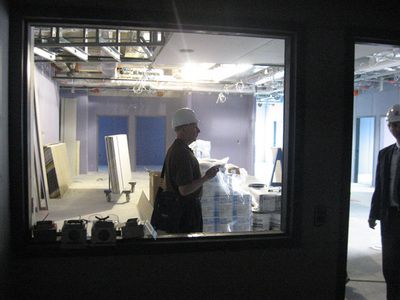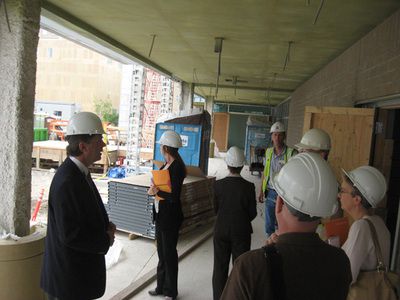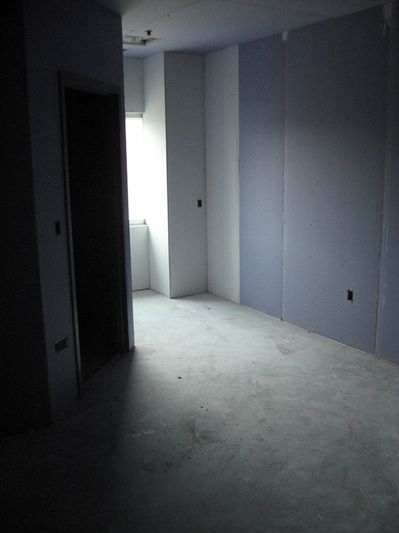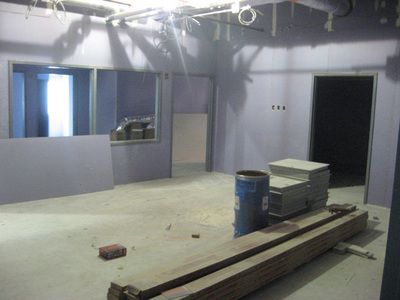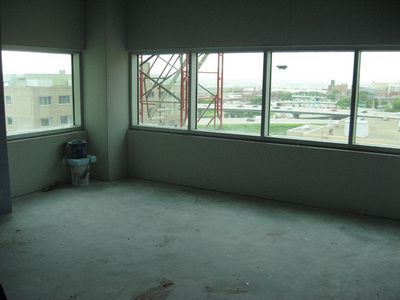For many people, this probably isn’t a big deal. For anyone who’s ever visited a family member in a mental health facility, it’s a pretty big deal. Someday, it’s going to be a window.
In attempting to end the mental health stigma, hospitals and mental health providers say all the right things, and then reinforce the notion that a mental health problem is different from a medical problem through something as simple as the unit’s front door — usually a windowless wall, behind a locked door, with an intercom to request permission to enter. When’s the last time you had to go through that to visit your friend who just had her gallbladder out?
This window is the entrance to a typical floor on Regions Hospital’s new mental health building, going up along I-94 in downtown Saint Paul. You’ll be greeted at the nurses station, not by a voice on an intercom asking you what you’re doing there.
This is a building being built with eliminating a stigma in mind. Like this, for example:
It’ll be a porch allowing patients to get some fresh air in a secure setting. That’s not possible now at the hospital’s current mental health unit, which isn’t unlike several others in the Twin Cities. Mental health patients, unlike other patients, don’t get fresh air.
At Regions, they also don’t get much privacy. There’s two to a small room now. In the new building, each patient gets his/her own room (it’ll be a coed facility, unlike the current unit). Each room has a private bathroom.
Each floor — there’ll be 20 patients on a floor — will have its own kitchen and dining room. The kitchen will help the staff evaluate a person’s ability to live independently.
There are few areas in the current unit for private meetings and group functions. That’s changing, too.
Health professionals have learned a lot about treating people with mental illness since the last mental health facility was built in the Twin Cities. Plenty of light, the feeling of being in control, open spaces are part of that. They’re patients, not prisoners.
One of the architects for the project brought his own perspective to the design. He has a family member with mental illness and experienced firsthand everything that’s wrong with how facilities are designed.
The hospital, city officials, and mental health professionals have been designing and are implementing an anti-stigma campaign. The new facility is designed to help families and the community look at mental illness as what it is — an illness.
The building officials hope will help do that opens in December.

